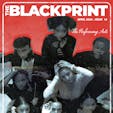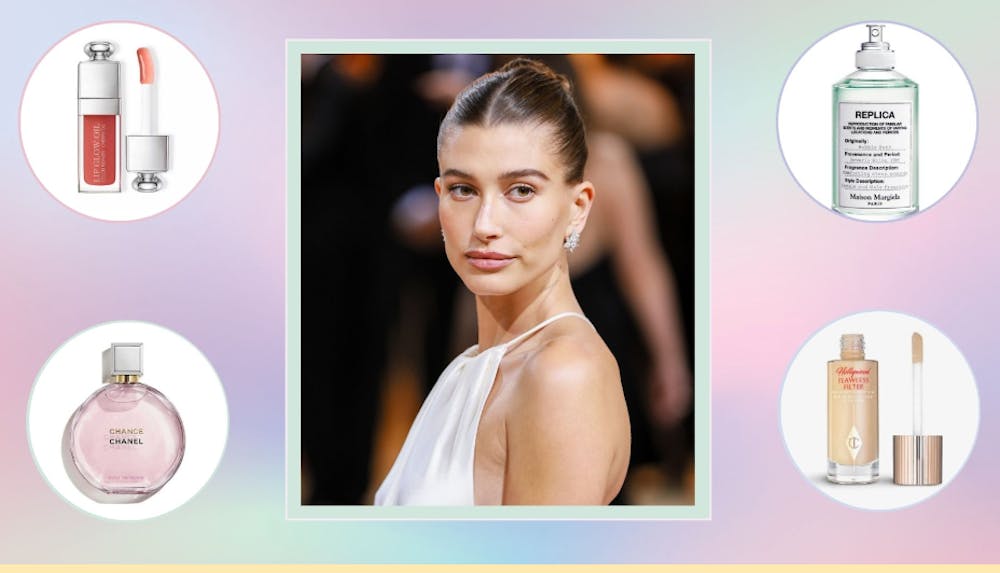TikTok has established itself as “the giant” of social media video-streaming platforms, as its users are relying on the app to view and participate in hundreds of thousands of trends that have been going viral on the platform. From dancing to cooking videos, Tiktok has become the go-to app for all things trendy.
One of the more recent trends that has swept the platform is the “Clean Girl Aesthetic” which has more than 670 million videos and counting under the trend’s hashtag. The sound accompanying this trend says, “You know those girls that always look clean? Their skin is always glossed, and they never look like they’re wearing too much makeup? You may not be them, but here’s how to get their look.” According to the trend, the “clean girl” aesthetic is known for its minimalist makeup look for those not wanting to apply more than 30 different makeup products to their face. This aesthetic is topped off with a slicked-back bun and small to medium-sized shiny gold hoop earrings.
When scrolling through the trend’s hashtag on tiktok, there is one clear problem: a large percentage of the trend’s participants are white women. Celebrities such as Hailey Bieber and Bella Hadid have been deemed the creators and pioneers of this trend, when in actuality, the concept of what tiktok has called “a clean girl” has existed in Black and Brown communities for hundreds of years. Gold hoop earrings that have come to characterize the clean girl aesthetic were popularized during the 1960s and 70s during the Black Power movement by Black female activists such as Angela Davis. Black female musical artists in the 90s, such as Salt n Pepa, also helped to bring the trend of gold hoop earrings to mainstream society.
The combination of slicked-back hair and clear lip gloss can also be traced to the chola female aesthetic that was popularized by marginalized Mexican-American women residing in Southern California during the 90s. For chola women, the chola look was more than just an aesthetic. According to Vice, the look signified the cholas’ “struggle and hard-won identity” after decades of experiencing “gang warfare, violence, poverty and conservative gender roles.”.
Time and time again, the clean girl aesthetic and other popular trends rooted in cultural appropriation show society that aspects of culture that are popularized by Black and Brown communities will only be deemed “acceptable” and “cute” when a white woman participates in the culture and claims it as her own. For generations, Black and Brown women have been criticized and called “ghetto” and “dirty” for the same aesthetic white women are praised for. The term “hot cheeto girl” has even been coined to demonize and look down upon Black and Brown women who embrace the slick-backed puff look, the gold hoop earrings, and the $1 clear lip gloss from the local beauty supply store. The clean girl aesthetic also continues to perpetuate the idea that Eurocentric beauty standards are ideal beauty standards, and excludes Black and Brown women from being able to participate in this trend, especially given the lack of diverse representation under the trend’s hashtag on TikTok.
The difference between cultural appropriation and cultural appreciation is simply giving credit where it's due. White women participating in a culture that was created by Black and Brown women only becomes a problem when they begin to treat it as if they were the first people to come up with these concepts that are quite familiar in marginalized communities. One way in which white people can appreciate this Black and Brown women-inspired aesthetic is by supporting and uplifting Black and Brown makeup artists on TikTok. An example of a Black beauty influencer I personally love is Naezrah Desir (@naezrahlooks), a 25-year old New York Native who is known for her “out-of-this-world” makeup looks. She is credited as being the inventor of the viral rainbow bright under eye makeup trend on TikTok, which has helped her amass more than 250,000 followers on the platform. In an interview with the Insider, Naezrah emphasizes her desire to be a “staple” for the growing creative makeup artists in the Black community, and overall being “an inspiration for those who look like her.” By highlighting and giving exposure to black beauty influencers like Naezrah, young black girls can be able to see themselves not only in viral beauty trends, but in the makeup industry as well, which has been historically white-dominated.
Investing and buying makeup products from black-owned businesses is another way communities of color who are responsible for today’s mainstream trends are being supported. Founded in 2012, the Lip Bar is a black-owned business that specializes in providing vegan makeup products that are WOC- friendly. Their “Gloss Up Sheer Finish Gloss”, for example, could be perfect for achieving a clear lip gloss look for an everyday type of aesthetic. Juvia’s Place is another black-owned makeup business that provides affordable makeup products that will complement whatever makeup look you are trying to achieve, whether it is a basic look or something more complex. But of course, nothing beats walking a few minutes to your local beauty supply store and picking up $1 Broadway Vita-Lip Clear Lip Gloss.
Dear white women: the next time you think about participating in the “clean girl aesthetic” trend, please remember that a Black and Brown woman is the inspiration behind the trend; these marginalized women have been subjected to nasty criticism for their unrecognized creativity and have jumped through hoops for you to be able to put on aspects of our culture free of judgment. It is imperative that you do your part in honoring and recognizing the efforts of Black and Brown women and their role in popularizing trends that the world takes part in but never gives credit for.



